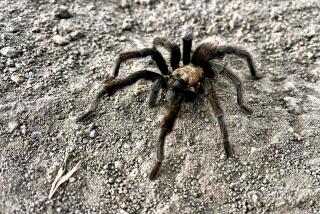Spotted sandpiper
- Share via
[ ACTITIS MACULARIA ]
The little teeter-bob, or tip-tail, lives along coastal shorelines from August through the winter. It earns these nicknames from its quirky habit of teetering back and forth as if it might fall over, but the spotted sandpiper is better known for its remarkable breeding behavior. This is one of the few bird species in which the females assume a dominant role by establishing territories and battling for males. They may fight for up to an hour, and injuries are common. The relatively docile males have high levels of prolactin, a pituitary hormone that promotes parental roles. Males tend the eggs and chicks, while females set out to win new males. Successful females lay up to four clutches of eggs with four different mates.
NATURAL HISTORY
During the breeding season, spotted sandpipers reside along streams in the Sierra Nevada and the mountains of Northern California, but fairly large numbers migrate south through the state and visit nearly every body of water in August and September. Wintering birds congregate in the Central Valley and around coastal bays and rivers.
KEY CHARACTERISTICS
Polka-dotted with dark spots during the breeding season, these sandpipers are best recognized by their constant tail bobbing and stiff-winged flights low over the water.





